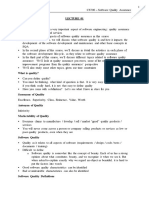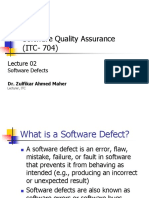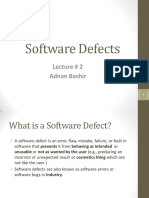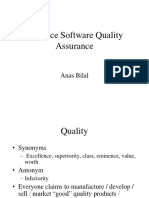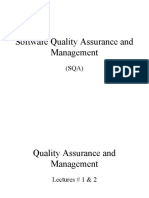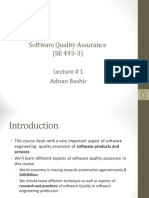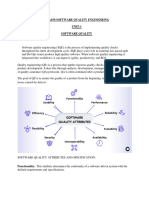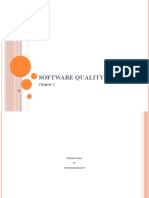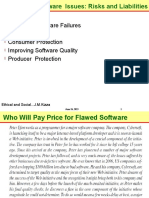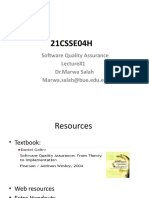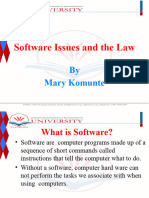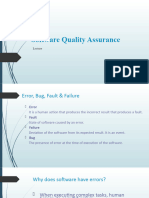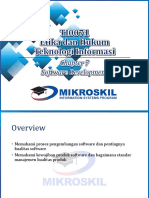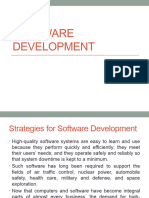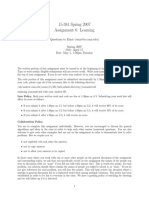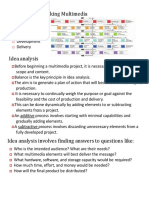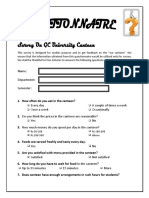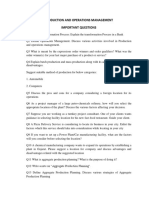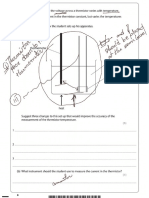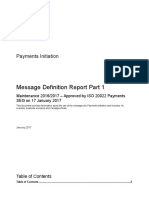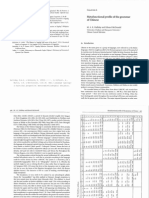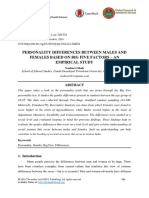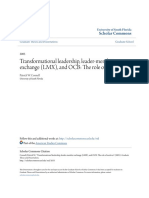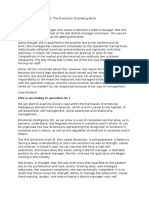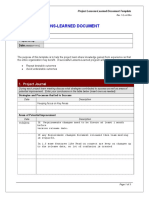0% found this document useful (0 votes)
133 views11 pagesLecture # 1
This document provides an introduction to a course on software quality assurance. It discusses key topics that will be covered, including defining quality, types of software defects, how defects originate, and strategies for defect prevention and removal. Specific techniques mentioned include inspections, testing, prevention through requirements and design reviews, and achieving high defect removal rates. The goal of the course is to understand how to guarantee and deliver high quality software.
Uploaded by
Alina PariCopyright
© © All Rights Reserved
We take content rights seriously. If you suspect this is your content, claim it here.
Available Formats
Download as DOCX, PDF, TXT or read online on Scribd
0% found this document useful (0 votes)
133 views11 pagesLecture # 1
This document provides an introduction to a course on software quality assurance. It discusses key topics that will be covered, including defining quality, types of software defects, how defects originate, and strategies for defect prevention and removal. Specific techniques mentioned include inspections, testing, prevention through requirements and design reviews, and achieving high defect removal rates. The goal of the course is to understand how to guarantee and deliver high quality software.
Uploaded by
Alina PariCopyright
© © All Rights Reserved
We take content rights seriously. If you suspect this is your content, claim it here.
Available Formats
Download as DOCX, PDF, TXT or read online on Scribd
/ 11

